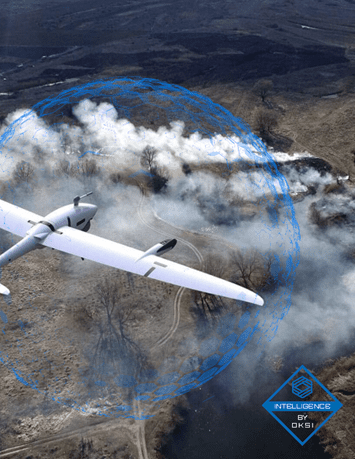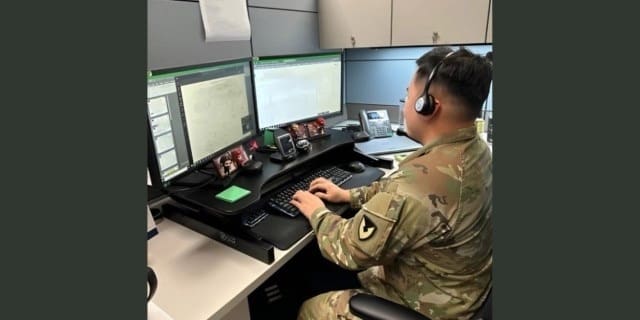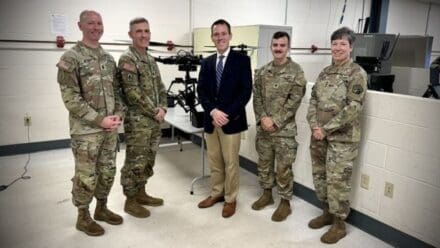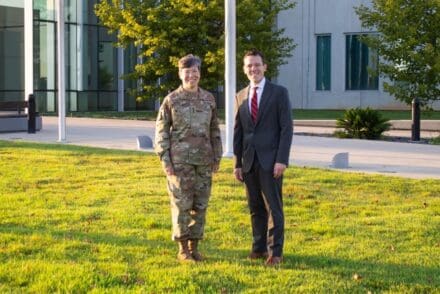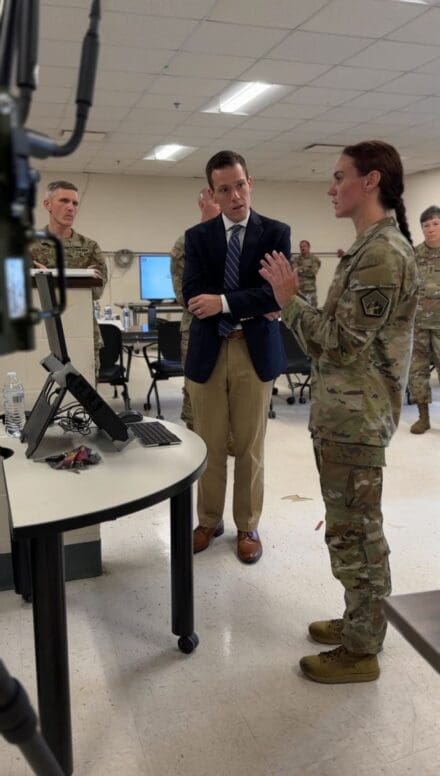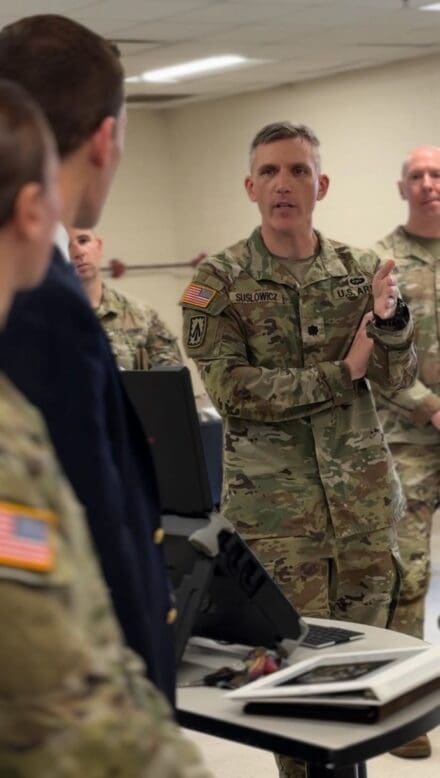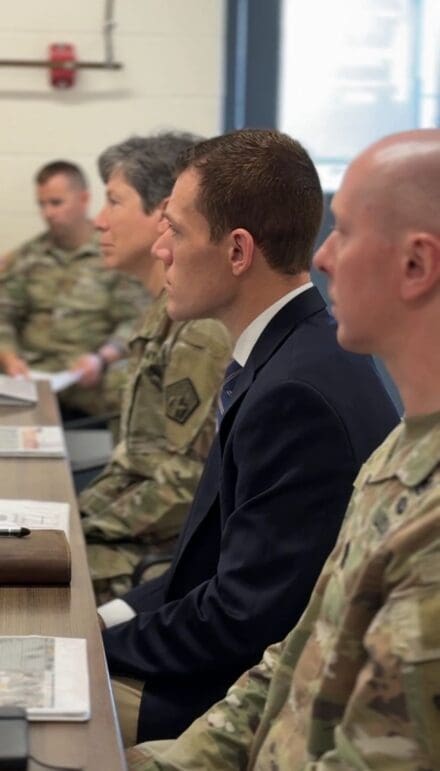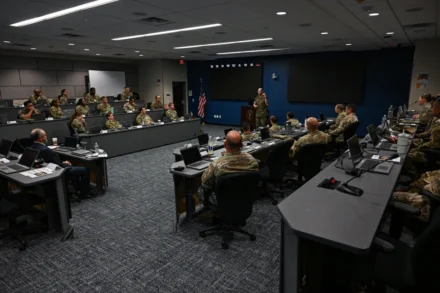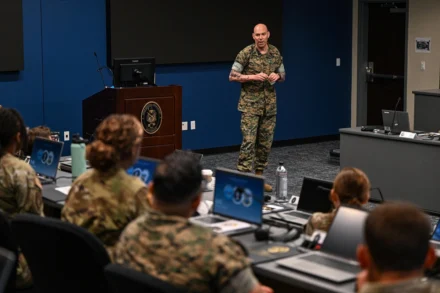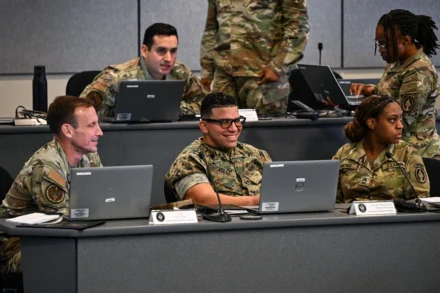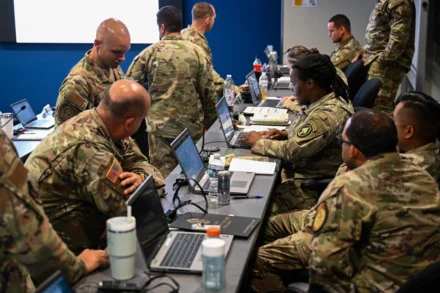
FORT GORDON, Ga. — The U.S. Army Cyber Command is advancing an ambitious multi-year plan to operationalize artificial intelligence across its digital battle space, aiming to enhance cybersecurity defenses, accelerate analysis and empower its Soldiers.
In spring 2023, Lt. Gen. Maria B. Barrett catalyzed a transformation by tasking the command to harness automation and AI — not for novelty, but to make missions more effective, decisions smarter and time more available for the people behind the screens.
“AI is not a luxury — it’s a necessity. Our mission demands speed, precision, and adaptability, and artificial intelligence is the force multiplier that enables all three,” Barrett emphasized. Since then, ARCYBER has rolled out a strategic roadmap focused on phased AI-human teaming, with milestones spanning from assisted operations to semi-autonomous digital agents by 2033.
Early results are already reshaping how the military fights and defends in cyberspace.
PANOPTIC JUNCTION, an AI-driven continuous monitoring platform designed to learn how systems are built, identify their most vulnerable points by analyzing system architecture and threat intelligence, and then automatically direct monitoring tools to watch those specific areas. In its prototype phase, it achieved an impressive 87% success rate in detecting malicious activity. ARCYBER is now implementing a 12-month production pilot to accelerate its adoption.
GHOSTCREW equips red team operatives with AI simulations to predict attack paths and recommend mission actions. By integrating human and machine expertise, the tool allows junior operators to benefit from the insights of seasoned veterans.
To enhance analytical depth, the Analytic Superiority Task Force leveraged AI tools from the Cyber Protection Brigade’s GEMINI project to uncover hidden enemy command-and-control infrastructure embedded in DNS traffic. This achievement would’ve eluded traditional analysis methods, taking days rather than minutes to analyze the data.
ARCYBER isn’t just focusing on mission execution. Projects like STORMYARCHER, an AI coding assistant pilot, and QUESCRIBE, an automated document reviewer, show the command’s intent to streamline support operations and strengthen developer capabilities. Despite early setbacks, teams learned critical lessons about infrastructure and performance, which led to the development of custom-built solutions that effectively meet operational needs.
In the public affairs realm, QUESCRIBE’s impact is already being felt. “QUESCRIBE, even in its pilot phase, has already proven itself to be a game-changer,” said Maj. Lindsay D. Roman, chief of public affairs for ARCYBER. “It’s dramatically streamlined our review workflow, eliminating time-intensive tasks and allowing my team and others involved to focus on higher-priority efforts — from crisis communications to strategic messaging. I love it already — it’s a powerful example of how thoughtful AI integration can translate directly into mission impact.”
Meanwhile, the grassroots AI Users Group puts tools like Ask Sage and CAMOGPT into the hands of Soldiers and civilians, fostering everyday innovation and productivity.
The backbone of these efforts is a robust governance framework. An AI Governance Board ensures ethical alignment, compliance and the effective deployment of capabilities. Its oversight began with QUESCRIBE, emphasizing transparency and user education from the outset.
Looking ahead, ARCYBER has its sights set on next-gen pilots:
- PIXIEMIRROR, which will use AI to compare classified threat indicators across unclassified data sources.
- AI-powered task routing is designed to deliver the right task to the right expert with minimal lag.
- NETCOM’s Unified Network Operations Dashboard which consolidates network data into a single decision-making interface.
ARCYBER’s adoption of AI isn’t a leap — it’s a methodical march. By pairing machine intelligence with human ingenuity, ARCYBER is building an adaptable cyber force ready to dominate the information environment.
“Machine Intelligence will be the decisive advantage in future decision making, maneuver and generation of capability — our job is to ensure every algorithm answers to a purpose, not just a possibility,” said Mark A. “Al” Mollenkopf, science advisor and chief analytics officer for ARCYBER.
That principle may be the command’s most significant asset of all.
By Lindsay D. Roman


